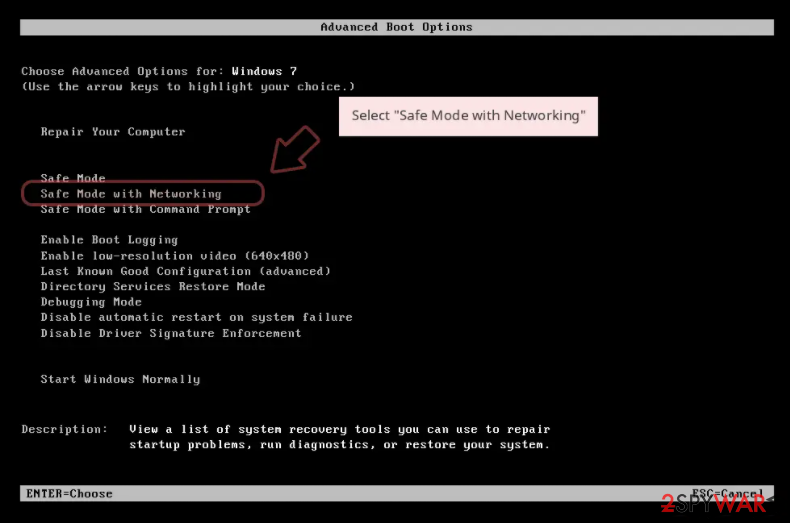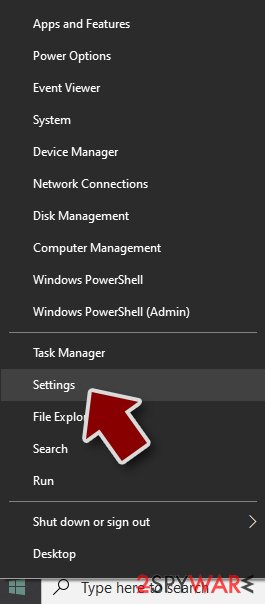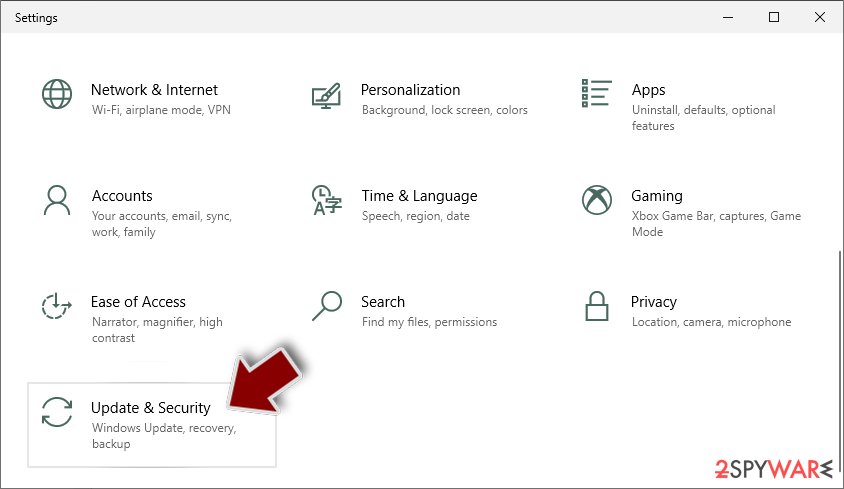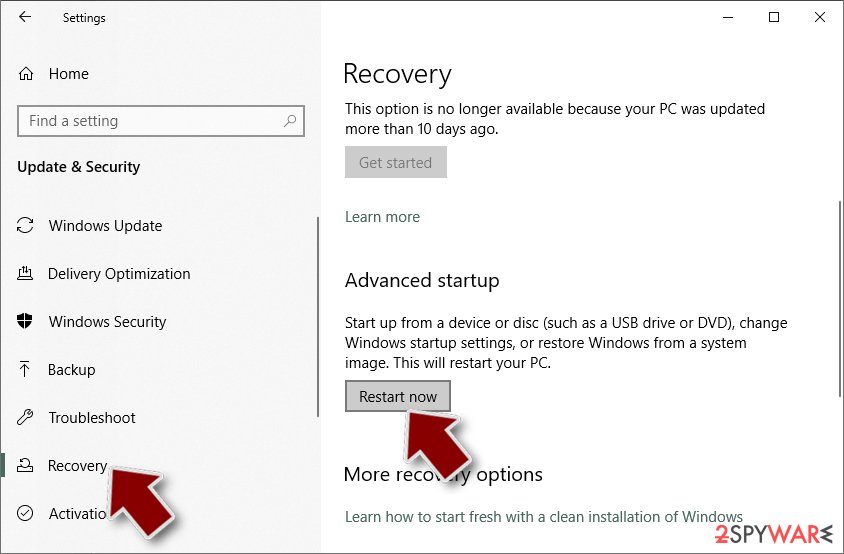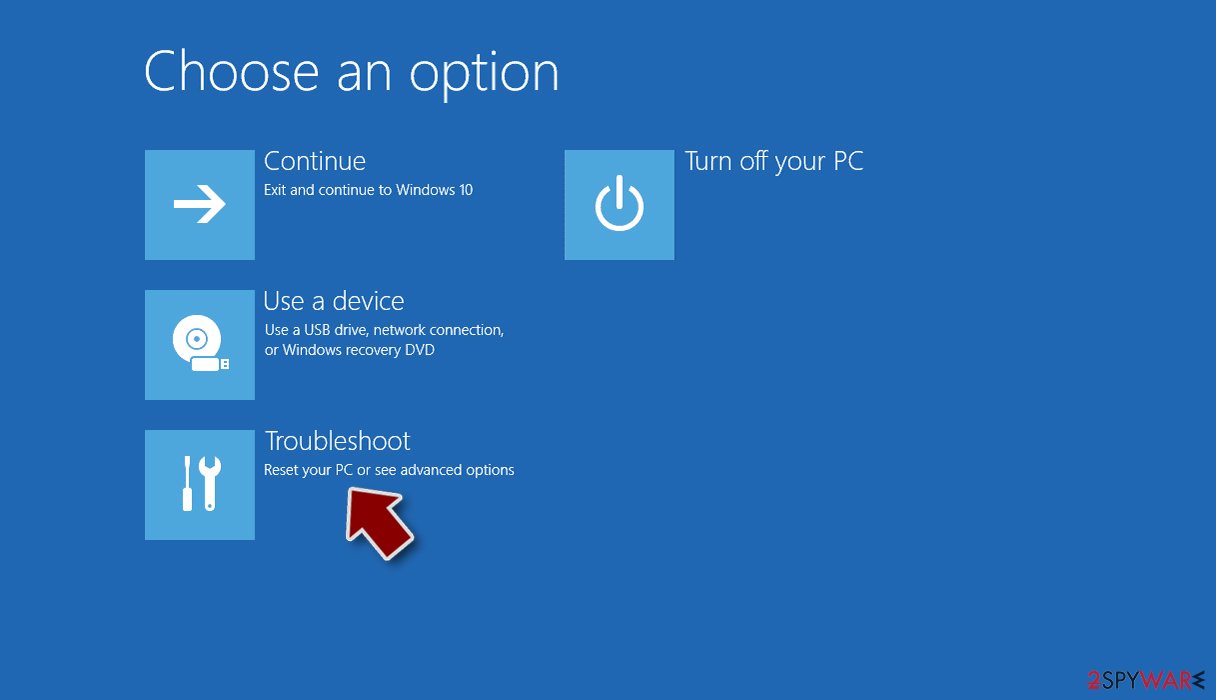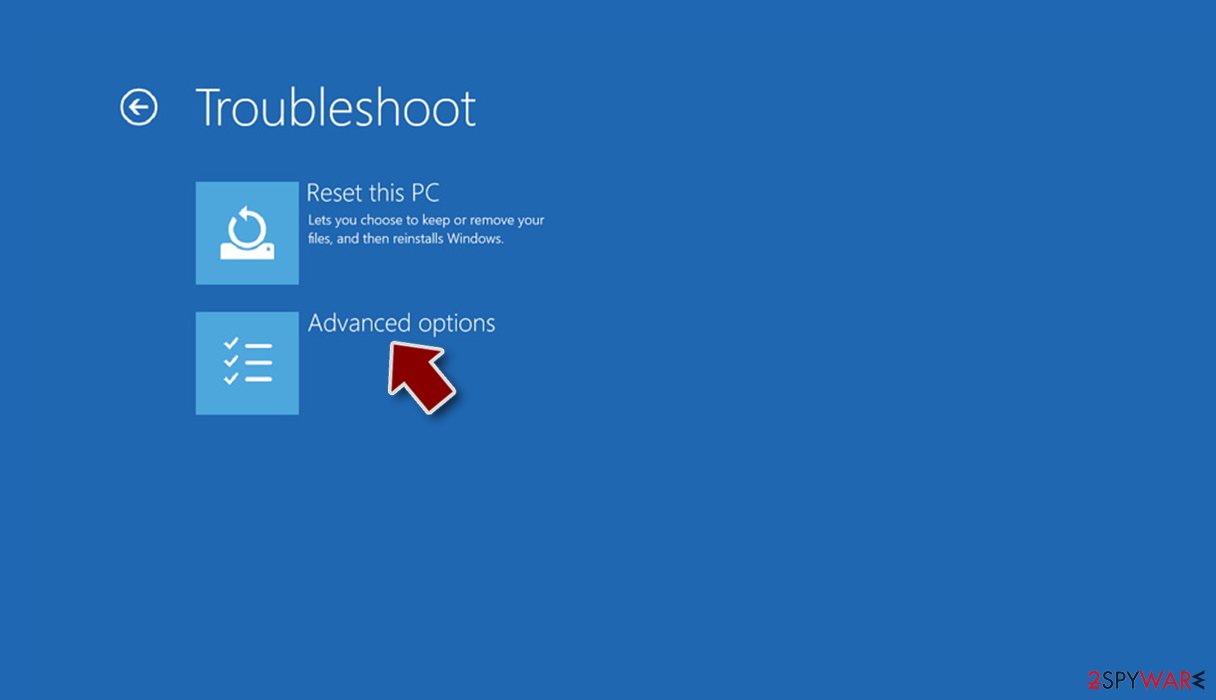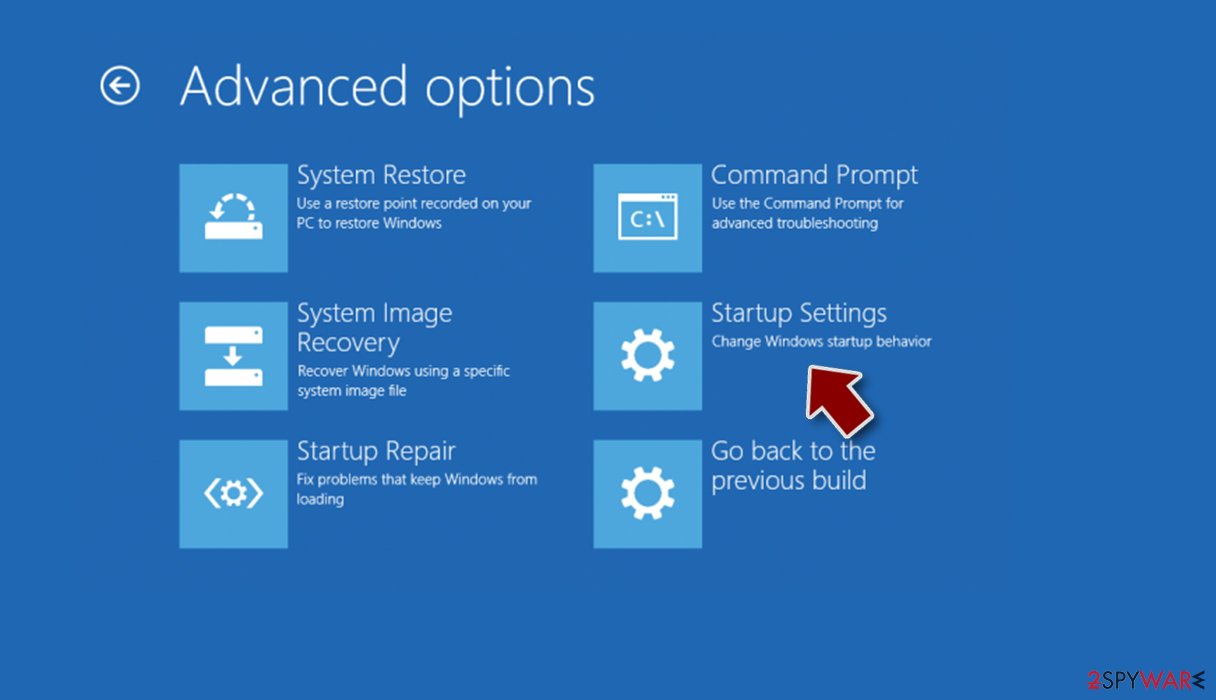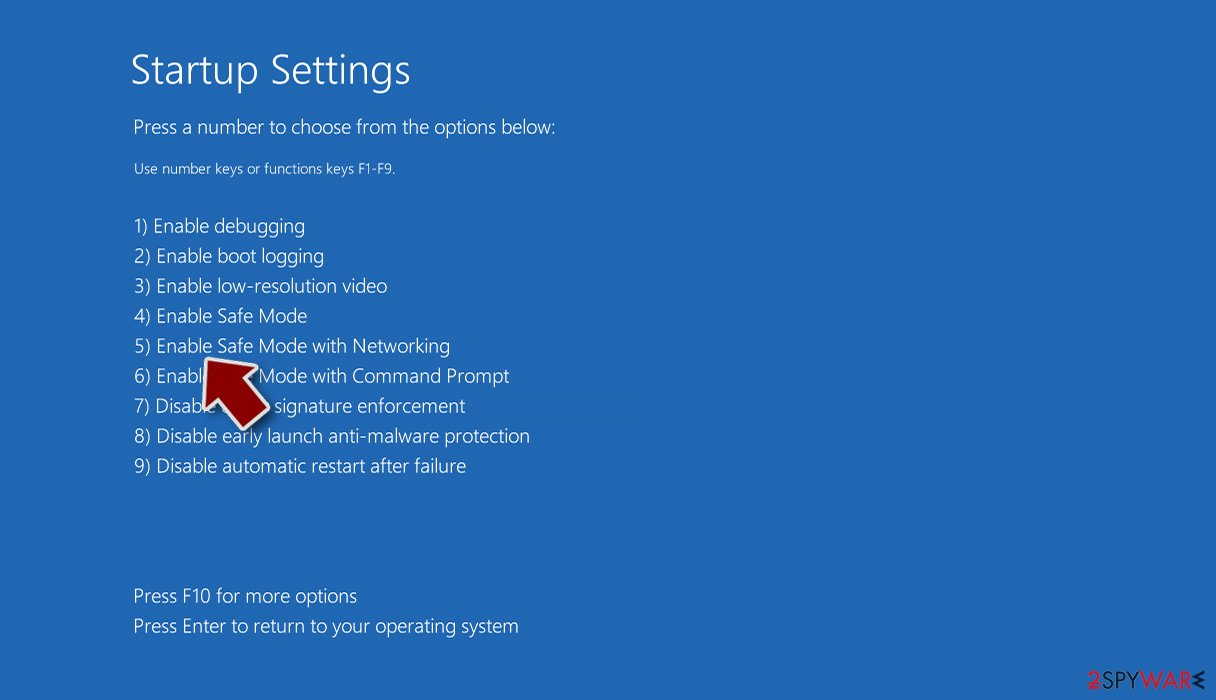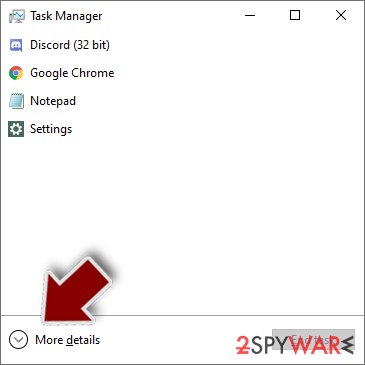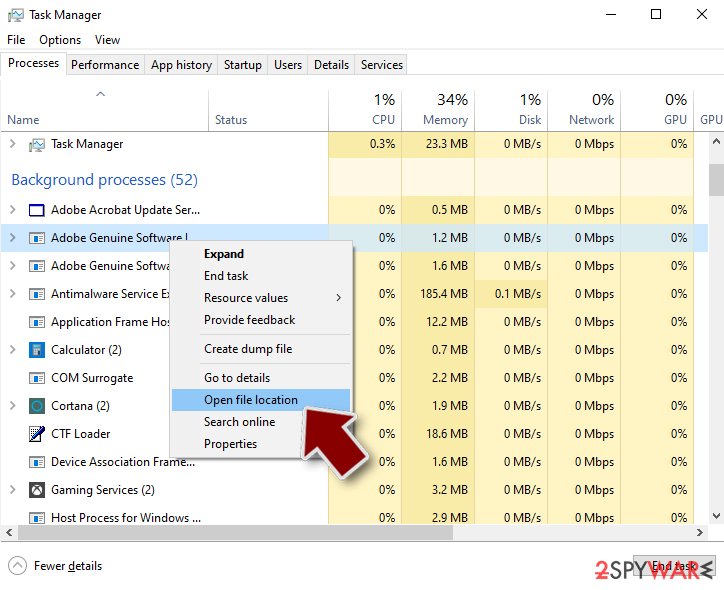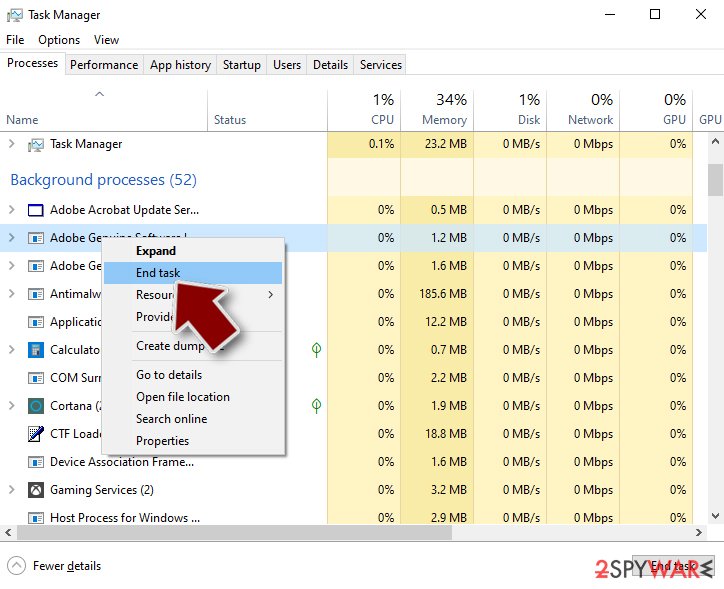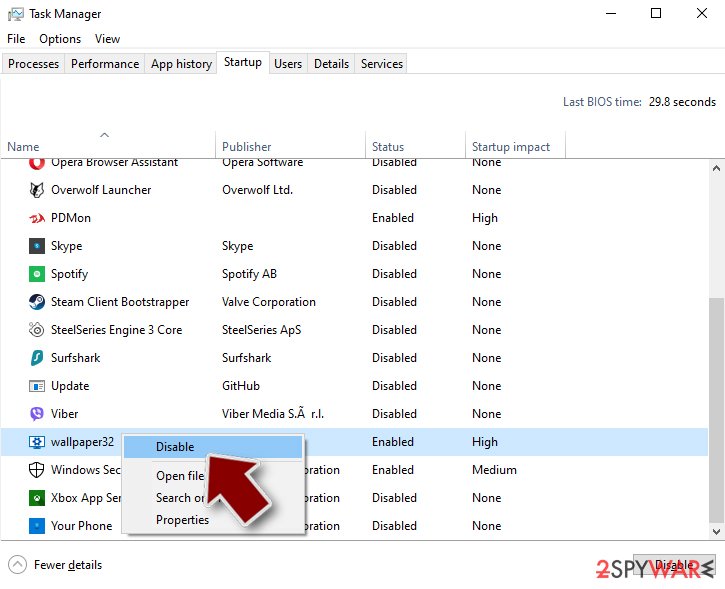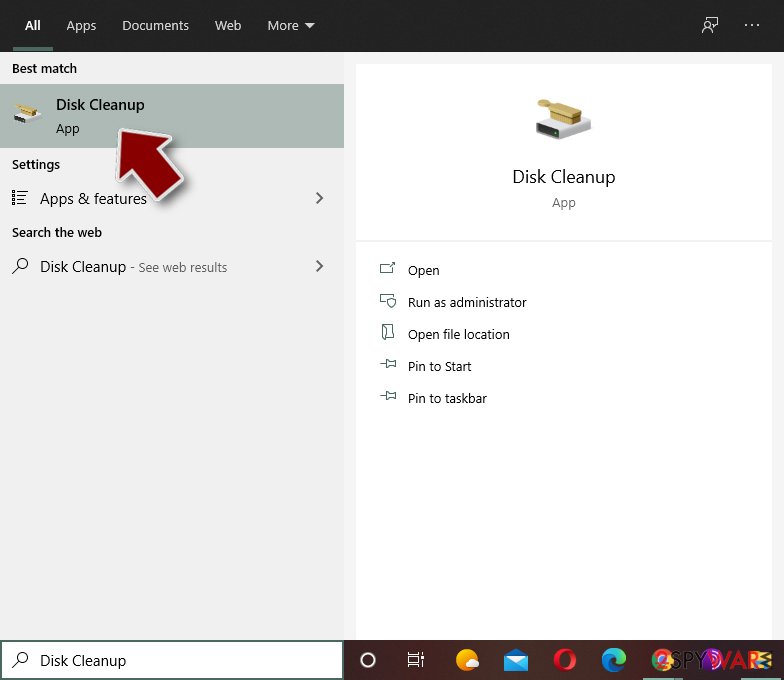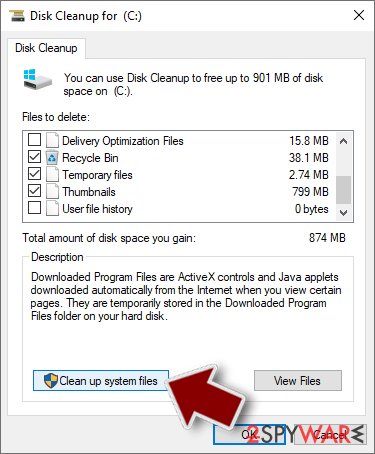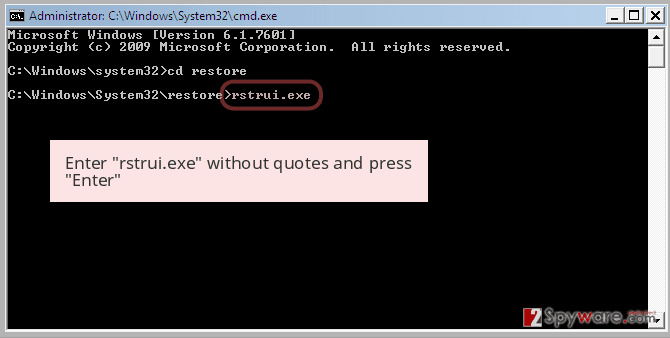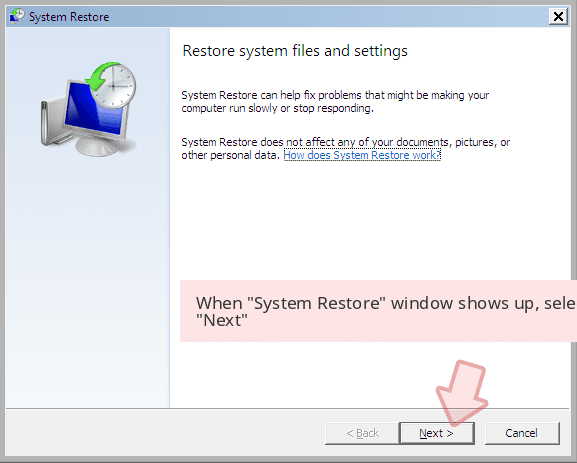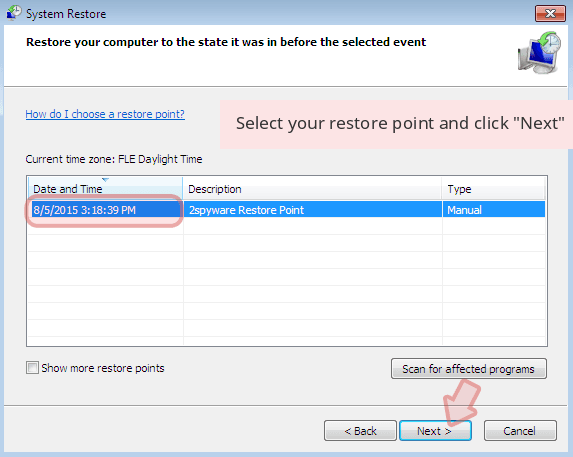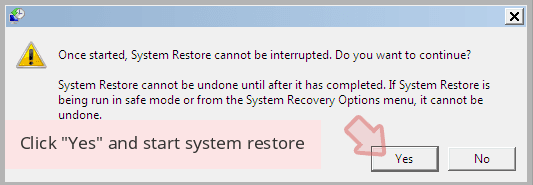LazagneCrypt ransomware (Quick Decryption Solution) - Virus Removal Guide
LazagneCrypt virus Removal Guide
What is LazagneCrypt ransomware?
LazagneCrypt not only encodes files but steals credentials as well
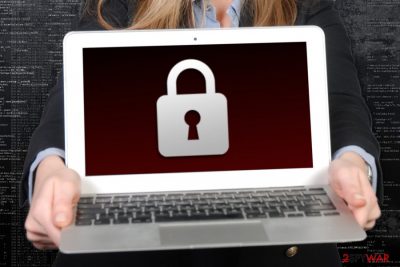
LazagneCrypt is a ransomware-type cyber threat that uses .encr file extension to lock targeted files on the affected computer. However, it’s not the only task of the malware. It also works as a password stealer and immediately sends collected credentials to its remote server.
LazagneCrypt ransomware runs from brc.exe. The executable is most likely to be dropped on the system when a user opens or downloads a malicious email attachment.[1] One of the first tasks ransomware does after the infiltration is the installation of other malicious components and files in these directories:
- %AppData%
- %Temp%
- %Roaming%
- %Common%
- %{User’s Profile}%
- %System32%
Before LazagneCrypt virus starts data encryption procedure, it also modifies Windows Registry to make sure that it boots with system startup. Once it's done, it starts data encryption and appends .encr file extension to Microsoft Office documents, images, and other popular data. Additionally, it might delete Shadow Volume Copies of the targeted data in order to make data recovery nearly impossible.
However, LazagneCrypt has another harmful feature – ability to steal credentials and send them to the remote server. Developers of crypto-virus used LaZagne open-source password recovery tool that allows extracting passwords saved on the computer. Then it uses SwissDisk to upload stolen credentials to the remote server.
Thus, detection and elimination of the malware must be done immediately. LazagneCrypt removal won’t help to restore encrypted files. However, it’s necessary to protect your personal information. Once you get rid of the virus, you should change all your passwords[2] instantly to make sure that criminals do not have access to your emails, bank or other accounts.
In order to remove LazagneCrypt from the computer entirely, you have to employ a professional malware removal software like FortectIntego. It can quickly eliminate all malicious components from the system. However, if you have some difficulties with this procedure, follow the guide given below the article.
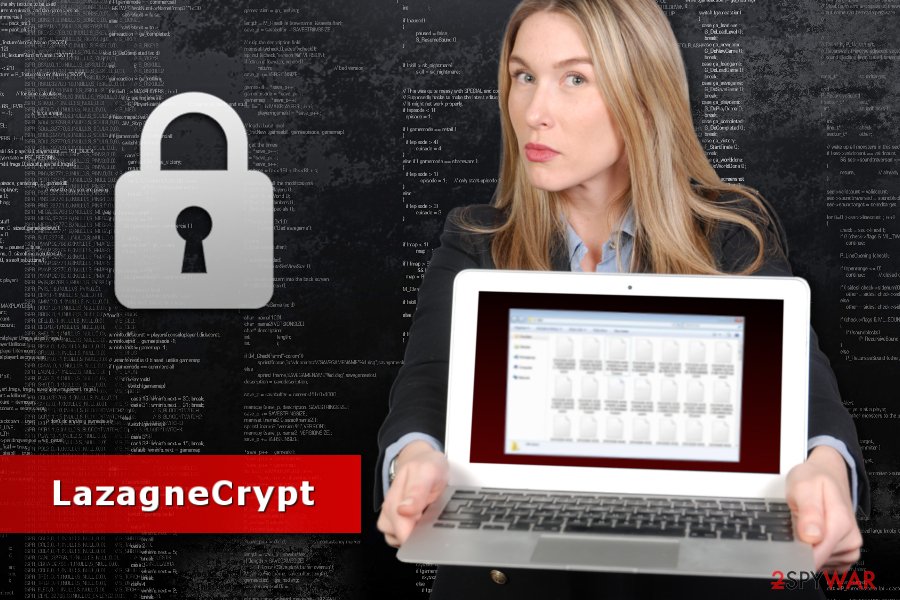
Ransomware infiltration requires user’s participation
Most of the time ransomware spreads via malicious spam emails that include fake download buttons, links or obfuscated attachments. The letter usually talks about important issues and urges to check information in the provided document or link. Once clicked or opened, it downloads malware executable.
However, ransomware research team from zondervirus.nl[3] warn that other methods are used for the distribution as well, such as:
- malvertising – delivery of malicious ads on legit and potentially dangerous websites;
- bogus software updates – fake pop-ups of available software updates might be delivered while browsing the web;
- fake or illegal software downloads – obfuscated or cracked programs might be offered to download on various file-sharing websites, P2P networks or torrents;
- exploitation of security vulnerabilities – outdated software might have security flaws that can be exploited by malicious software in order to infiltrate the device.
Thus, users should be careful when browsing the web, clicking or downloading any content. We highly recommend not only protecting the computer with professional antivirus but creating and regularly updating backups as well.
Uninstall LazagneCrypt ransomware virus to protect your personal data
LazagneCrypt removal is crucial to protect your personal information, finances, and identity. As you already know, ransomware can steal credentials, and this activity is more dangerous than data encryption. Thus, you should not hesitate and download one of the suggested malware removal tools – FortectIntego, Malwarebytes or SpyHunter 5Combo Cleaner.
If you cannot install or run a system scan with anti-malware, you should reboot the computer to Safe Mode with Networking or try System Restore method. Then, you should be able to remove LazagneCrypt automatically without any problems. You can find the instructions below.
Getting rid of LazagneCrypt virus. Follow these steps
Manual removal using Safe Mode
To delete LazagneCrypt ransomware automatically, you should reboot the system to Safe Mode with Networking first.
Important! →
Manual removal guide might be too complicated for regular computer users. It requires advanced IT knowledge to be performed correctly (if vital system files are removed or damaged, it might result in full Windows compromise), and it also might take hours to complete. Therefore, we highly advise using the automatic method provided above instead.
Step 1. Access Safe Mode with Networking
Manual malware removal should be best performed in the Safe Mode environment.
Windows 7 / Vista / XP
- Click Start > Shutdown > Restart > OK.
- When your computer becomes active, start pressing F8 button (if that does not work, try F2, F12, Del, etc. – it all depends on your motherboard model) multiple times until you see the Advanced Boot Options window.
- Select Safe Mode with Networking from the list.

Windows 10 / Windows 8
- Right-click on Start button and select Settings.

- Scroll down to pick Update & Security.

- On the left side of the window, pick Recovery.
- Now scroll down to find Advanced Startup section.
- Click Restart now.

- Select Troubleshoot.

- Go to Advanced options.

- Select Startup Settings.

- Press Restart.
- Now press 5 or click 5) Enable Safe Mode with Networking.

Step 2. Shut down suspicious processes
Windows Task Manager is a useful tool that shows all the processes running in the background. If malware is running a process, you need to shut it down:
- Press Ctrl + Shift + Esc on your keyboard to open Windows Task Manager.
- Click on More details.

- Scroll down to Background processes section, and look for anything suspicious.
- Right-click and select Open file location.

- Go back to the process, right-click and pick End Task.

- Delete the contents of the malicious folder.
Step 3. Check program Startup
- Press Ctrl + Shift + Esc on your keyboard to open Windows Task Manager.
- Go to Startup tab.
- Right-click on the suspicious program and pick Disable.

Step 4. Delete virus files
Malware-related files can be found in various places within your computer. Here are instructions that could help you find them:
- Type in Disk Cleanup in Windows search and press Enter.

- Select the drive you want to clean (C: is your main drive by default and is likely to be the one that has malicious files in).
- Scroll through the Files to delete list and select the following:
Temporary Internet Files
Downloads
Recycle Bin
Temporary files - Pick Clean up system files.

- You can also look for other malicious files hidden in the following folders (type these entries in Windows Search and press Enter):
%AppData%
%LocalAppData%
%ProgramData%
%WinDir%
After you are finished, reboot the PC in normal mode.
Remove LazagneCrypt using System Restore
This method might also help to eliminate ransomware from the system:
-
Step 1: Reboot your computer to Safe Mode with Command Prompt
Windows 7 / Vista / XP- Click Start → Shutdown → Restart → OK.
- When your computer becomes active, start pressing F8 multiple times until you see the Advanced Boot Options window.
-
Select Command Prompt from the list

Windows 10 / Windows 8- Press the Power button at the Windows login screen. Now press and hold Shift, which is on your keyboard, and click Restart..
- Now select Troubleshoot → Advanced options → Startup Settings and finally press Restart.
-
Once your computer becomes active, select Enable Safe Mode with Command Prompt in Startup Settings window.

-
Step 2: Restore your system files and settings
-
Once the Command Prompt window shows up, enter cd restore and click Enter.

-
Now type rstrui.exe and press Enter again..

-
When a new window shows up, click Next and select your restore point that is prior the infiltration of LazagneCrypt. After doing that, click Next.


-
Now click Yes to start system restore.

-
Once the Command Prompt window shows up, enter cd restore and click Enter.
Bonus: Recover your data
Guide which is presented above is supposed to help you remove LazagneCrypt from your computer. To recover your encrypted files, we recommend using a detailed guide prepared by 2-spyware.com security experts.If your files are encrypted by LazagneCrypt, you can use several methods to restore them:
Method 1. Data Recovery Pro
Data Recovery Pro is a professional software that can recover corrupted files. However, it is also useful after ransomware attack. But don't forget that it's not an actual LazagneCrypt decryptor, so it may not recover all of your data.
- Download Data Recovery Pro;
- Follow the steps of Data Recovery Setup and install the program on your computer;
- Launch it and scan your computer for files encrypted by LazagneCrypt ransomware;
- Restore them.
Method 2. Windows Previous Versions feature
This Windows feature allows traveling back in computer's time and accessing old versions of files. Thus, you can get back to the date before ransomware attack and copy individual files. However, you can use this method only if System Restore was enabled before ransomware attack.
- Find an encrypted file you need to restore and right-click on it;
- Select “Properties” and go to “Previous versions” tab;
- Here, check each of available copies of the file in “Folder versions”. You should select the version you want to recover and click “Restore”.
LazagneCrypt decryptor hasn't been released yet.
Finally, you should always think about the protection of crypto-ransomwares. In order to protect your computer from LazagneCrypt and other ransomwares, use a reputable anti-spyware, such as FortectIntego, SpyHunter 5Combo Cleaner or Malwarebytes
How to prevent from getting ransomware
Access your website securely from any location
When you work on the domain, site, blog, or different project that requires constant management, content creation, or coding, you may need to connect to the server and content management service more often. The best solution for creating a tighter network could be a dedicated/fixed IP address.
If you make your IP address static and set to your device, you can connect to the CMS from any location and do not create any additional issues for the server or network manager that needs to monitor connections and activities. VPN software providers like Private Internet Access can help you with such settings and offer the option to control the online reputation and manage projects easily from any part of the world.
Recover files after data-affecting malware attacks
While much of the data can be accidentally deleted due to various reasons, malware is one of the main culprits that can cause loss of pictures, documents, videos, and other important files. More serious malware infections lead to significant data loss when your documents, system files, and images get encrypted. In particular, ransomware is is a type of malware that focuses on such functions, so your files become useless without an ability to access them.
Even though there is little to no possibility to recover after file-locking threats, some applications have features for data recovery in the system. In some cases, Data Recovery Pro can also help to recover at least some portion of your data after data-locking virus infection or general cyber infection.
- ^ Patrick Allan. Ransomware Is Being Hidden Inside Attachments of Attachments. Lifehacker. Tips, tricks and downloads for getting things done.
- ^ Dion Dassanayake. E-MAIL WARNING - If you’re on this list of 711 million accounts, change your password NOW. Express CO UK. Latest UK and World news.
- ^ ZonderVirus. ZonderVirus. Dutch cyber security news.
